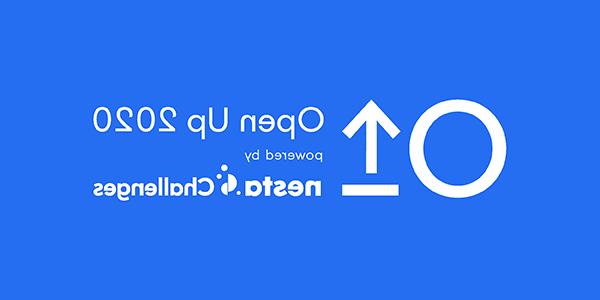
Marketing is an essential component of success for any business. 然而,仅仅把钱花在广告和促销上是不够的. You need to ensure your marketing efforts are delivering a positive return on investment (ROI) and driving growth for your business.
This is where a well-designed marketing budget that ensures you’re maximising your marketing ROI comes in.
What is ROI and ROAS?
ROI stands for Return on Investment. 这是一种衡量投资或营销活动盈利程度的方法. 基本上,它告诉你是否从你的投资中获得了比投入更多的回报.
On the other hand, ROAS stands for Return on Advertising Spend. 这是一个专门用于评估广告活动有效性的指标. It helps you figure out if the money you're spending on a particular advertising channel or campaign is generating enough revenue to justify the investment.
What is the Difference Between ROI and ROAS?
This article will focus on ROI, but having knowledge on the difference between ROI and ROAS, as well as how they help you maximise your marketing budget, will help you make more informed decisions.
It's important to understand the difference between ROI and ROAS when measuring the success of your marketing efforts. ROAS is typically used to measure the return on investment for a specific advertising channel or campaign. It takes a more linear approach, 你把钱投资在一个渠道上,然后衡量投资的回报.
On the other hand, ROI takes a more holistic approach, considering the entire marketing ecosystem, including offline marketing such as word-of-mouth and networking, and various online practices such as PPC, social media ads, and organic search. This involves an omnichannel attribution modeling, 这显示了所有不同的营销渠道是如何共同创造一个有凝聚力的策略的.
If your marketing strategy is effective, it should result in a positive ROI, 这意味着你总投资的回报大于投资的成本.
By understanding the difference between ROI and ROAS, you can gain a deeper insight into the effectiveness of your marketing efforts and make data-driven decisions to optimise your budget allocation.
Why is ROI Important for Marketing?
As mentioned above, your ROI is your “return on investment”, which is a measure of the profit or revenue generated by an investment compared to the cost of that investment. In the context of marketing, ROI is a way of evaluating the effectiveness of your marketing campaigns by comparing the revenue generated by those campaigns to the cost of running them.
Calculating ROI is important for marketing because it allows you to evaluate the effectiveness of your campaigns and make data-driven decisions about how to allocate your budget. By tracking ROI, you can identify which channels and campaigns are delivering the highest return on investment and adjust your budget accordingly. This helps you to maximise your marketing budget and ensure that your efforts are driving growth and revenue for your business.
Analysing Your Marketing ROI: Key Metrics and Tools to Consider
在你开始制定营销预算之前,你需要了解如何衡量投资回报率.
你可以使用一些指标和工具来做到这一点,包括:
- 客户获取成本(CAC):该指标衡量获得新客户的成本. To calculate your CAC, divide your total marketing spend by the number of new customers acquired during a specific time period. 低CAC表明你的营销努力是有效的, while a high CAC suggests the opposite.
- Lifetime Value (LTV): LTV measures the total revenue a customer is expected to generate over their lifetime with your business. To calculate your LTV, multiply the average value of a purchase by the average number of purchases made per customer per year, 然后乘以客户关系的平均长度(以年为单位). 高LTV表明你的营销努力正在推动客户忠诚度和留存率, which can lead to sustained revenue growth over time.
- Conversion Rates: Conversion rates measure the percentage of website visitors or leads that take a desired action, such as making a purchase or filling out a form. To calculate your conversion rate, divide the number of conversions by the number of website visitors or leads during a specific time period. A higher conversion rate indicates that your marketing efforts are effectively driving engagement and interest from your target audience.
- Attribution Models: Attribution models help you understand which marketing channels and campaigns are contributing to conversions and revenue. There are several different attribution models to consider, such as;
- 第一次接触:将转化归因于潜在客户与你的品牌的第一次接触
- 最后一次接触:将转化归因于销售前的最后一次接触点
- 多点触控:将转换归因于客户旅程中的多个接触点.
使用一个适合你的商业目标和营销策略的归因模型, 你可以更好地了解哪些渠道和活动带来了最大的收益.
By analysing these metrics, you can identify which marketing channels and campaigns are driving the most revenue for your business and adjust.
Defining Your Marketing Goals
To build an effective marketing budget, 你需要清楚地了解你的商业目标和营销目标.
企业通常希望通过营销实现几个目标,例如:
- Increase Brand Awareness
- Generate Leads
- Drive Sales
- Improve Customer Retention
Once you have a clear picture of your marketing goals, you can allocate your budget to the channels and campaigns that are most likely to achieve your desired goals.
建立预算优先级,确定高投资回报率的渠道和活动
一旦你清楚地了解了你的营销目标和市场趋势, it’s time to start prioritising your budget. This means identifying the channels and campaigns that are delivering the highest ROI and allocating more of your budget to those areas.
For example, say you’ve been running social media campaigns, email campaigns, and PPC advertising to generate leads and sales. After analysing your metrics, you find your social media campaigns have a lower CAC and was generating more leads and sales than your email campaigns and PPC ads, you may want to shift more of your budget to your social media campaigns as it’s delivering a higher ROI and should be higher priority in your marketing budget.
定期评估营销渠道和活动的投资回报率可以让你调整预算, and reallocate your budget from low-performing channels and campaigns to high-performing ones to maximise your ROI.
In addition to tracking metrics, 在分配预算时,考虑营销趋势和用户行为是很重要的. For example, 如果你的目标受众主要使用社交媒体来研究和购买产品, it would be in your best interest to allocate more budgeting to social media advertising than to other marketing channels such as email or PPC.
Balancing Short-Term and Long-Term Goals to Craft a Realistic Budget
When building a marketing budget, 在短期目标和长期目标之间取得平衡是很重要的. 虽然你可能会把所有的预算都集中在能产生立竿见影效果的活动上, 投资于能够带来长期利益的活动也很重要, such as brand awareness and customer loyalty.
It’s easy to focus solely on short-term goals, as they provide immediate gratification and tangible results. 然而,从长远来看,忽视长期目标会损害你的业务.
制定一个现实的营销预算,平衡你的短期和长期目标, you need to evaluate your marketing goals and objectives. 确定哪些是短期目标,哪些是长期目标,并相应地分配预算.
For example, if you're launching a new product, you may want to allocate more of your budget to short-term goals such as PPC advertising and social media campaigns to generate immediate sales. 然而, you should also invest in long-term goals such as content marketing and SEO to build that vital brand awareness and gain customer loyalty over time.
需要注意的是,长期目标需要持续的投资和努力. 建立品牌知名度和客户忠诚度不是一蹴而就的, and it requires consistent effort and investment over time. By allocating a portion of your budget to long-term goals, 从长远来看,你可以确保你的营销努力是可持续的和可扩展的.
西蒙·斯涅克谈到了可持续发展的重要性 The Infinite Game. 你希望你的企业能够长期存在,服务于许多代人, 哪些只有在短期和长期目标之间找到平衡才能实现, and not allowing yourself to be roped in by the temporary and immediate satisfaction of short-term wins.
Maximising ROI with Data-Driven Decisions
Maximising ROI with data-driven decisions is a crucial aspect of building a successful marketing budget. This process involves regularly monitoring and adjusting your marketing budget based on the data you collect. The data-driven approach involves tracking your ROI and other key metrics to identify areas where you may need to adjust your budget or reallocate resources.
To make data-driven decisions, you need to gather accurate data and use it to make informed decisions. This requires setting up analytics tools and tracking software that allows you to measure and track the performance of your marketing campaigns accurately.
Once you’re able to analyse your data, 你将能够做出更明智的决定来分配你的预算.
Best Practise for Building a Marketing Budget that Fuels Success
Building a marketing budget that gives you the very best ROI and fuels your business successes requires careful planning, monitoring and adjusting. By analysing your marketing ROI, defining your marketing goals, assessing marketing trends, establishing budget priorities, and crafting a realistic budget, you can ensure that your marketing efforts are effective, efficient and aligned with your business objectives. Additionally, 通过监控预算并根据数据驱动的决策调整资源, 你可以最大化你的投资回报率,最大化你的营销预算的影响.
执行构建营销预算的最佳实践需要时间和精力, but the rewards are significant. 根据企业的独特需求和目标制定预算, you can ensure that your marketing efforts are driving growth, increasing revenue, and delivering a positive return on investment.
无论你是小企业主还是大公司的营销专业人员, 这些策略可以帮助你建立一个预算,推动你的业务成功.









